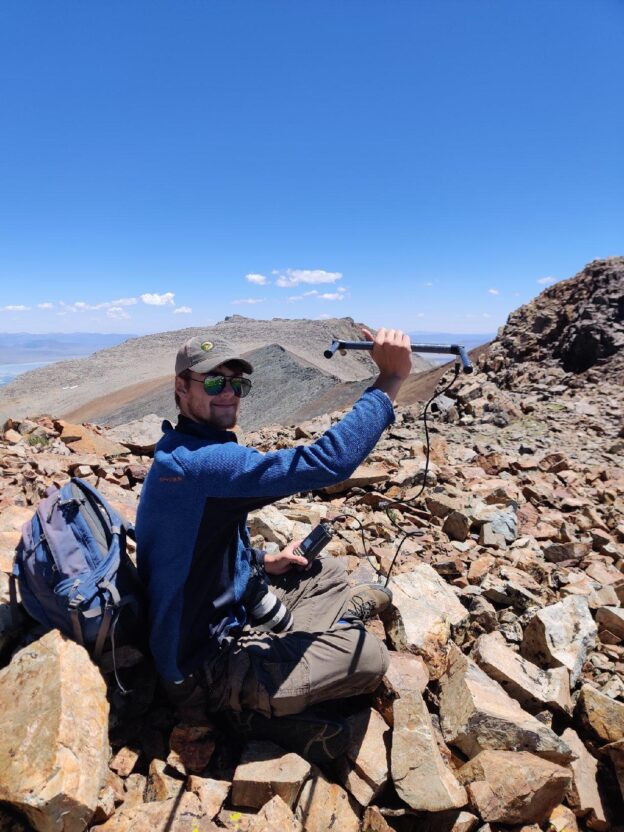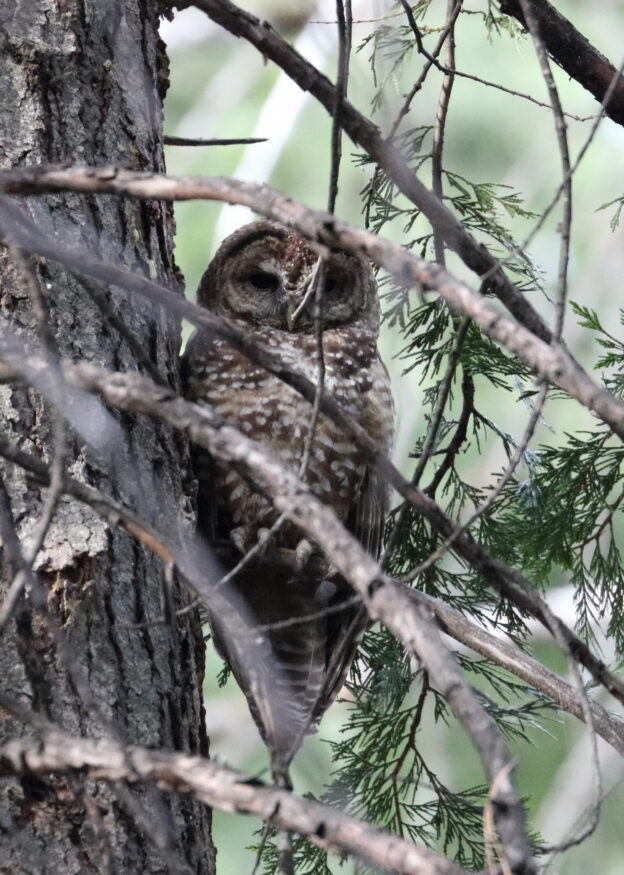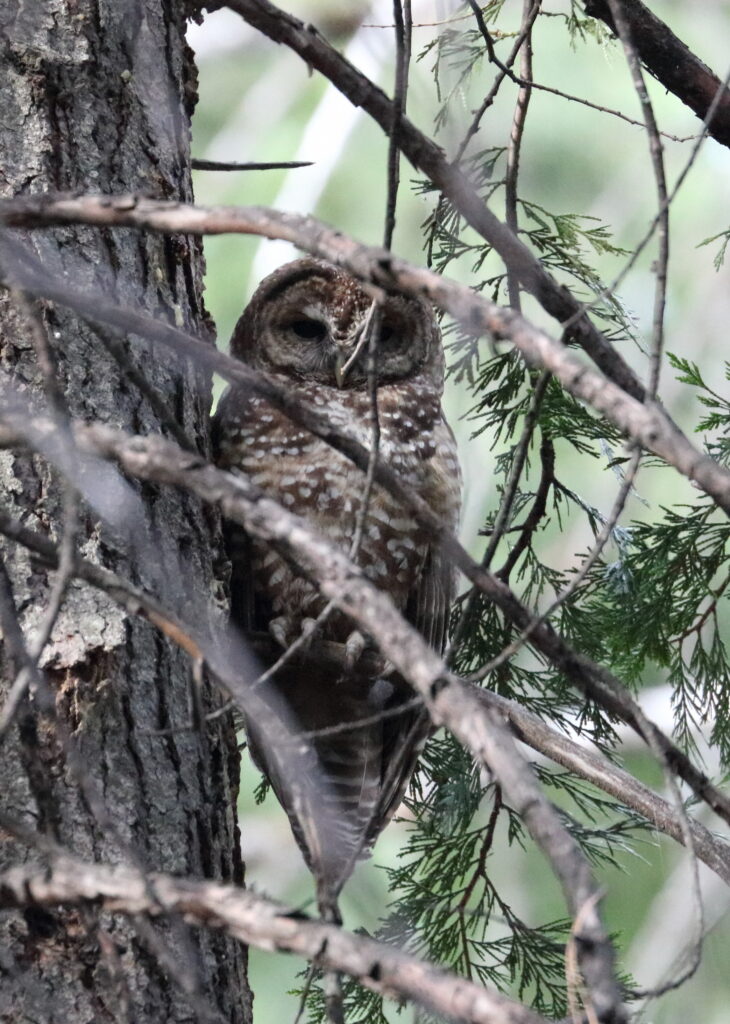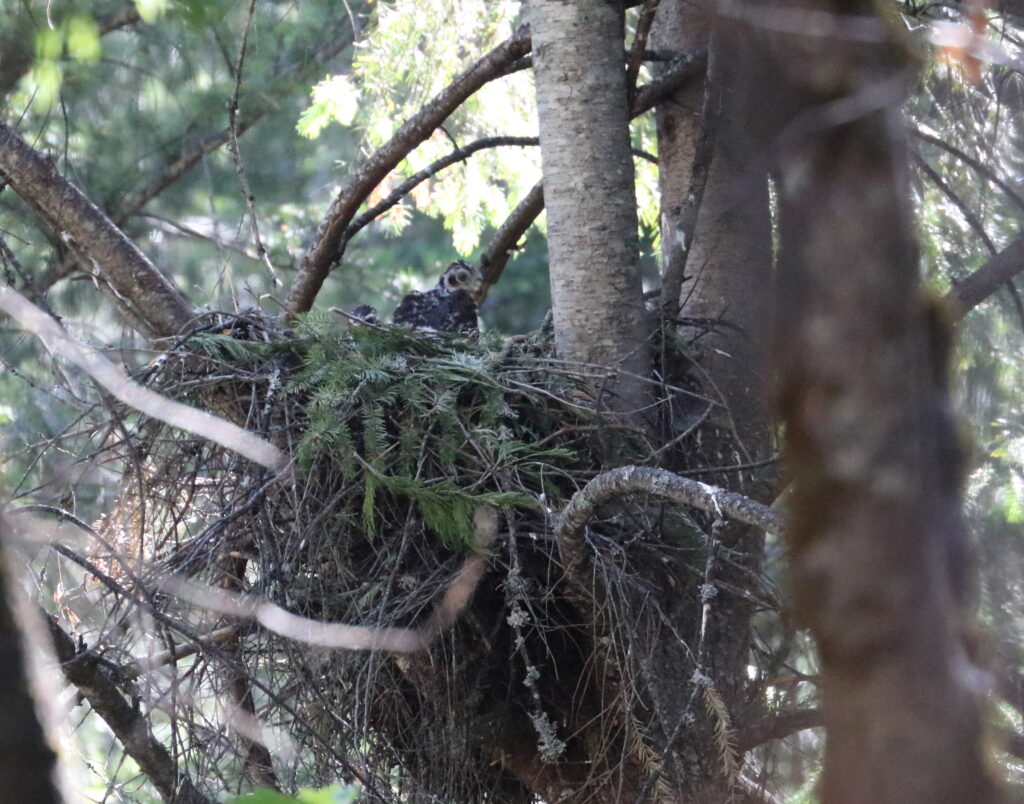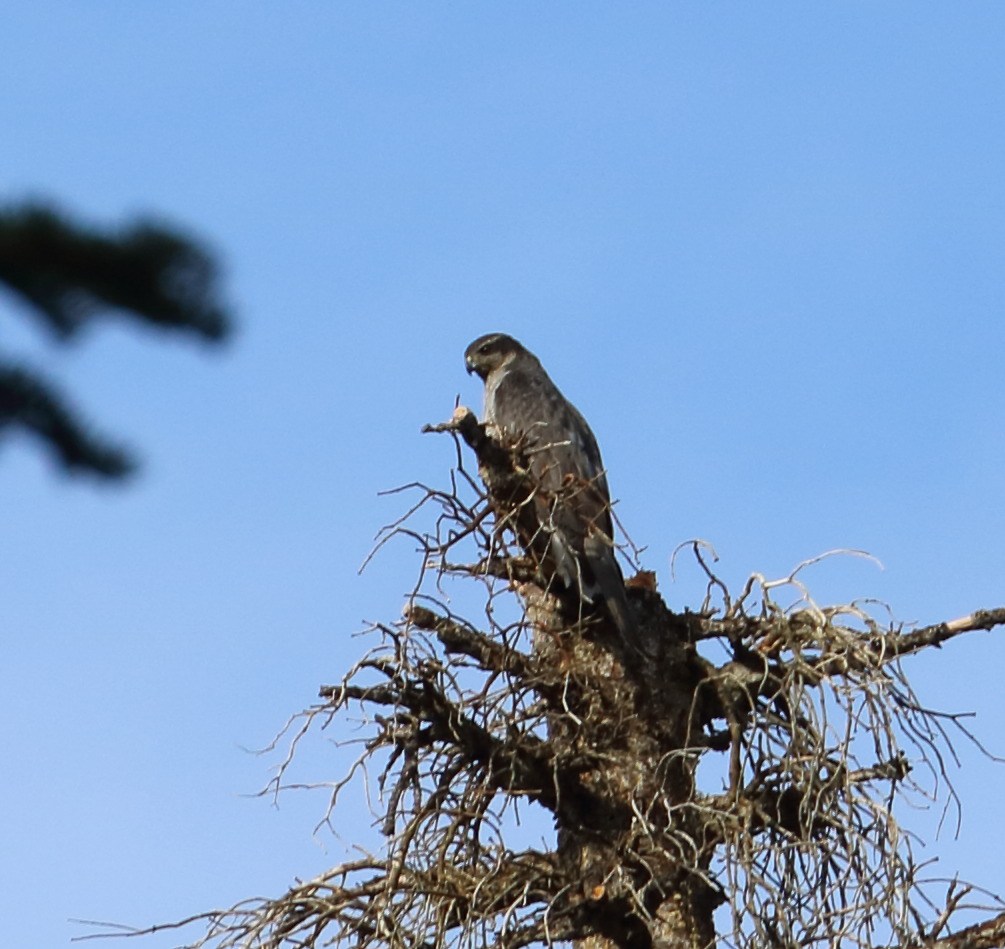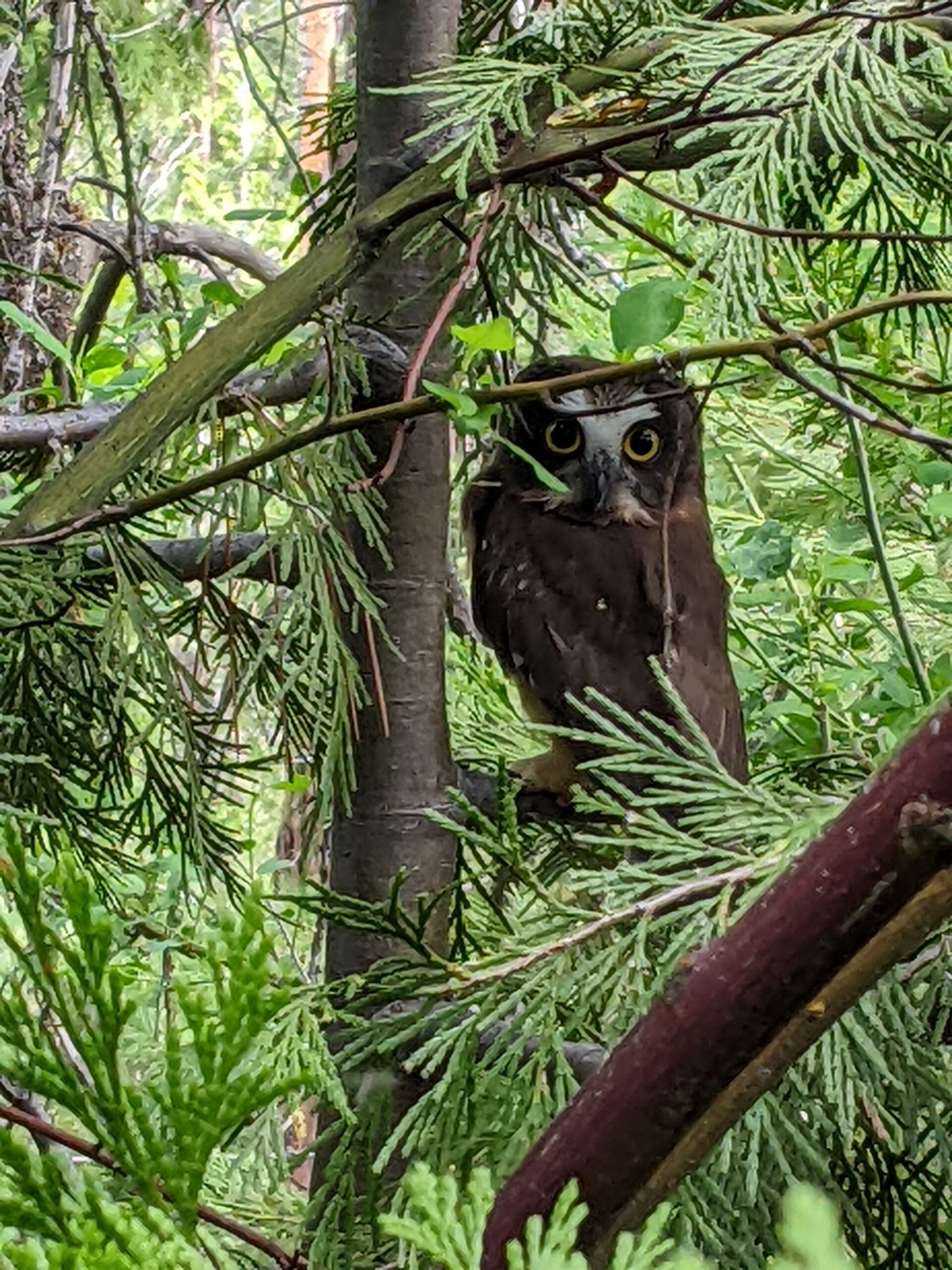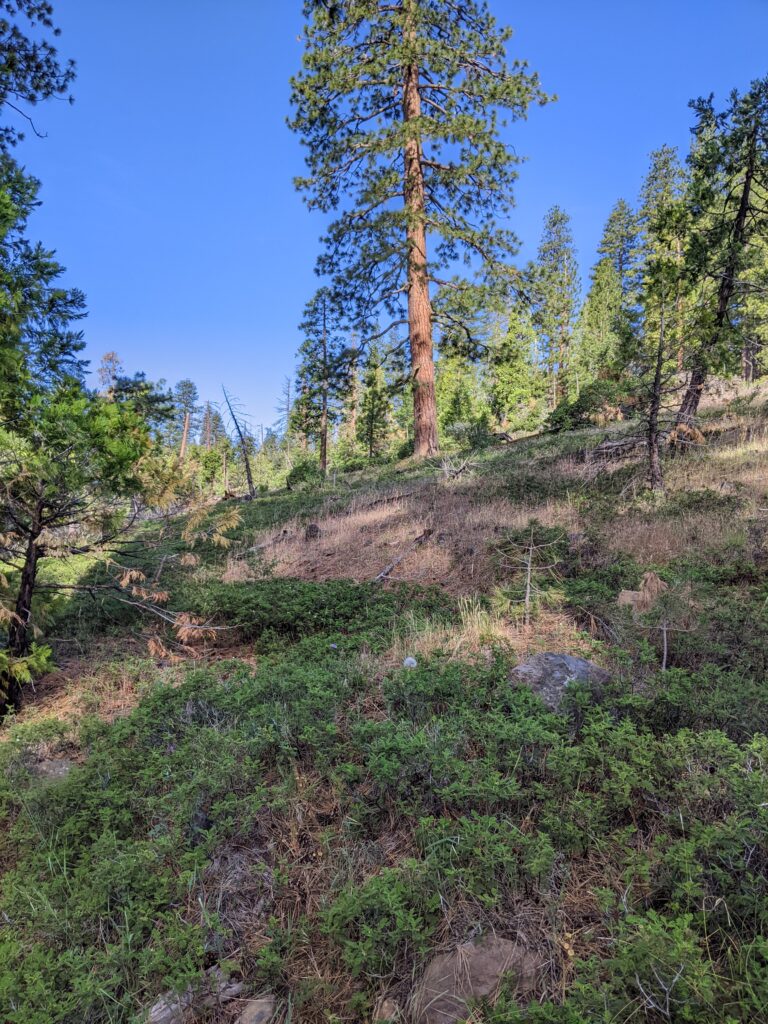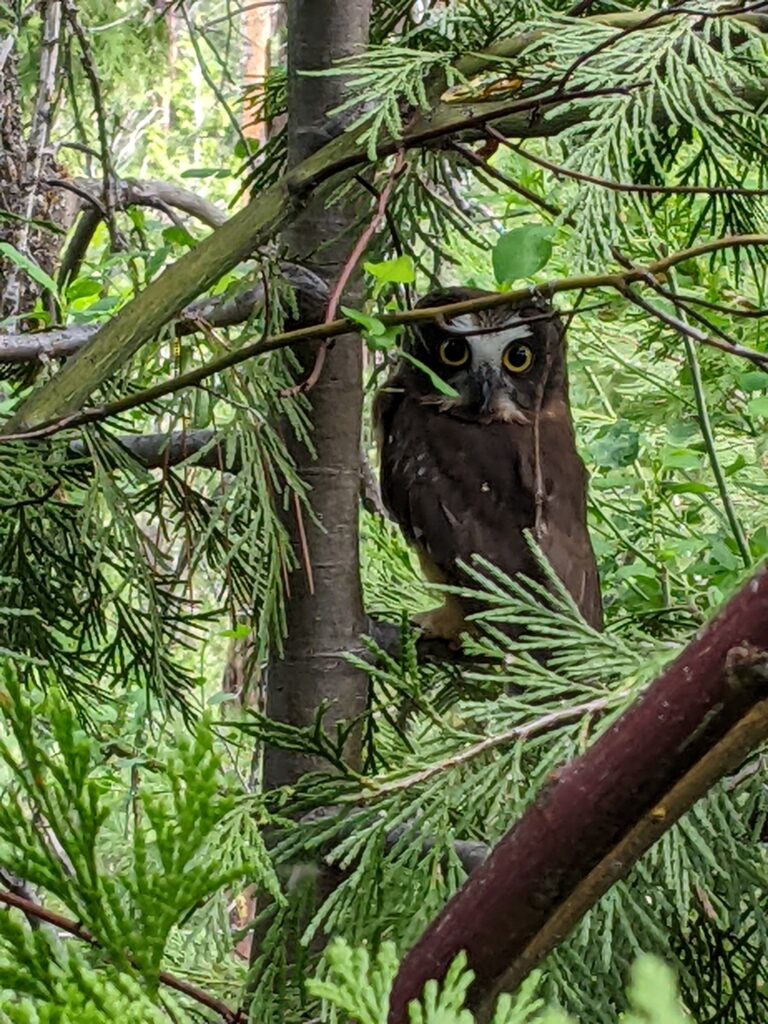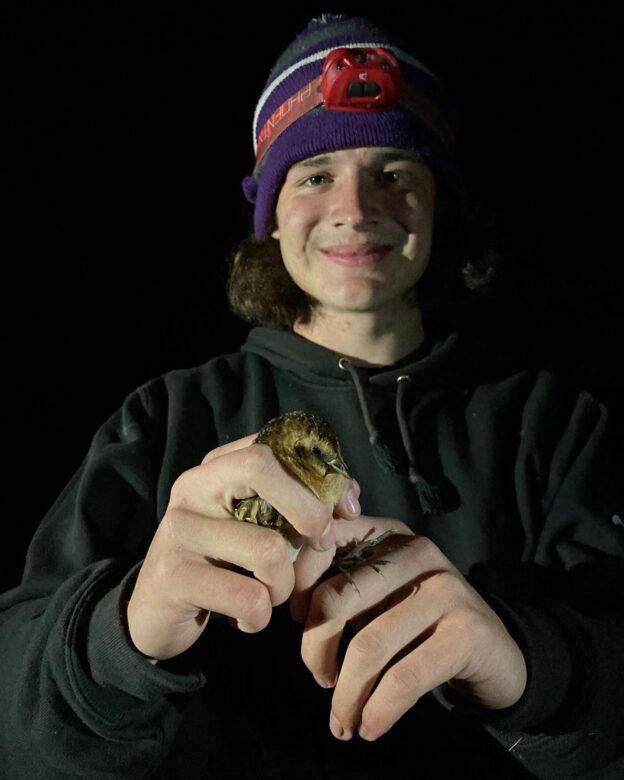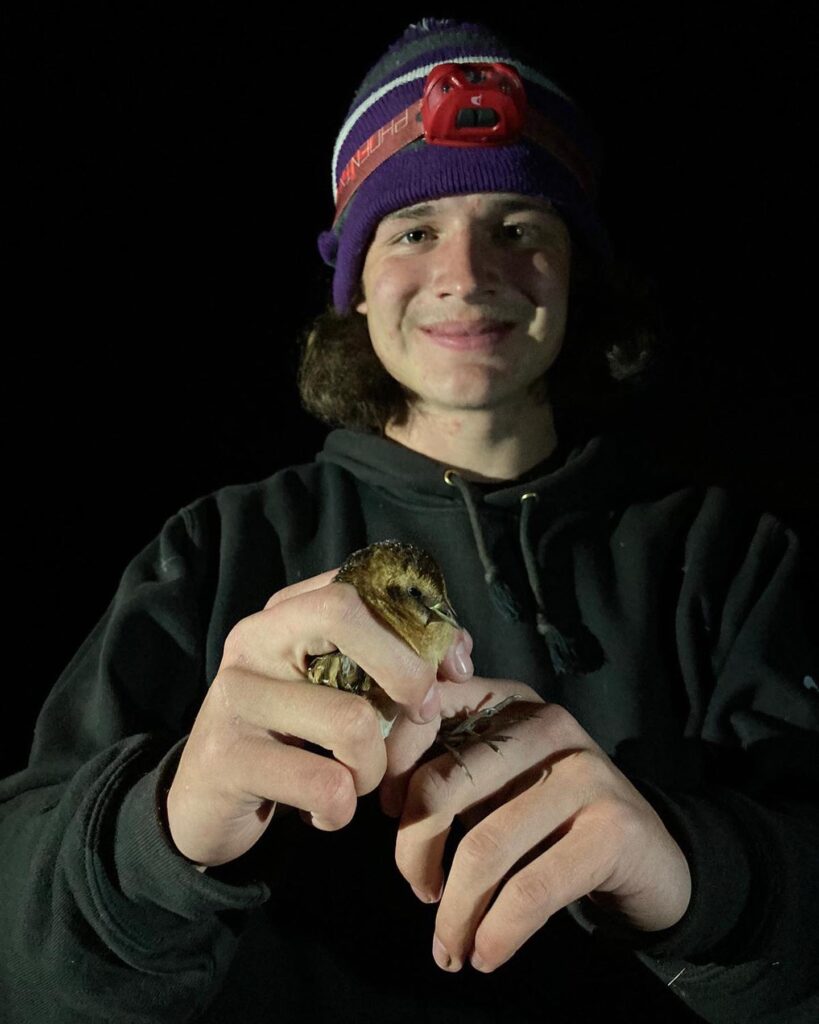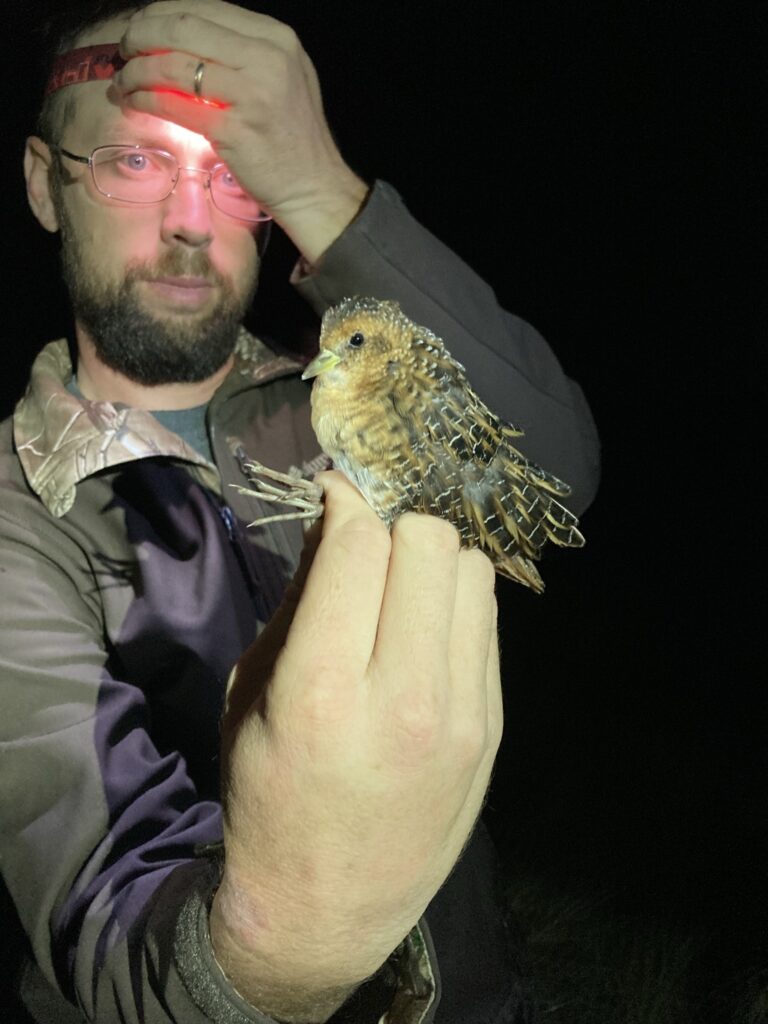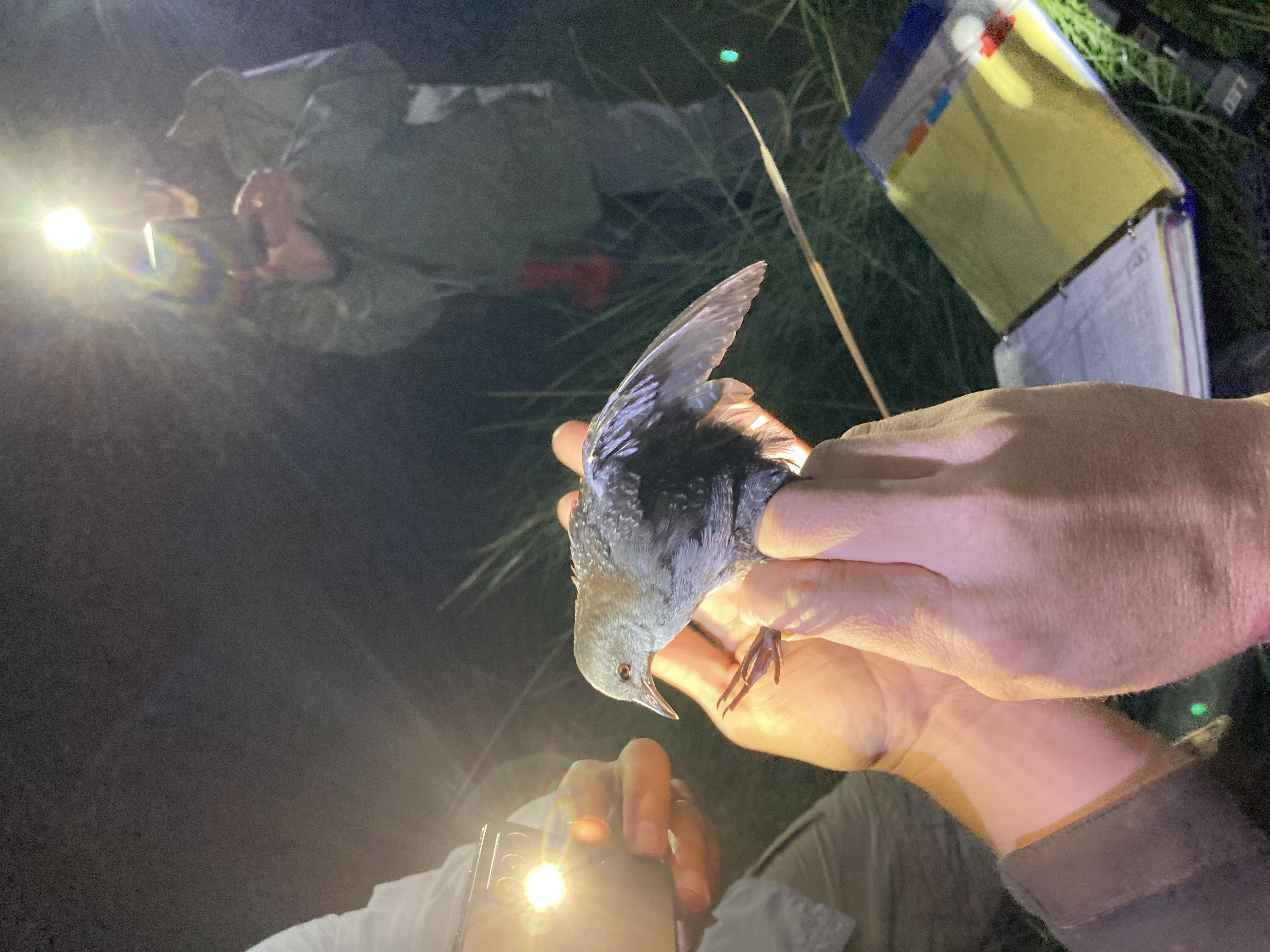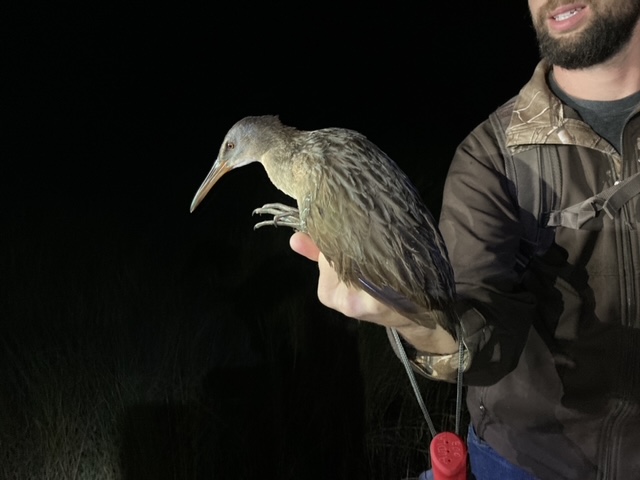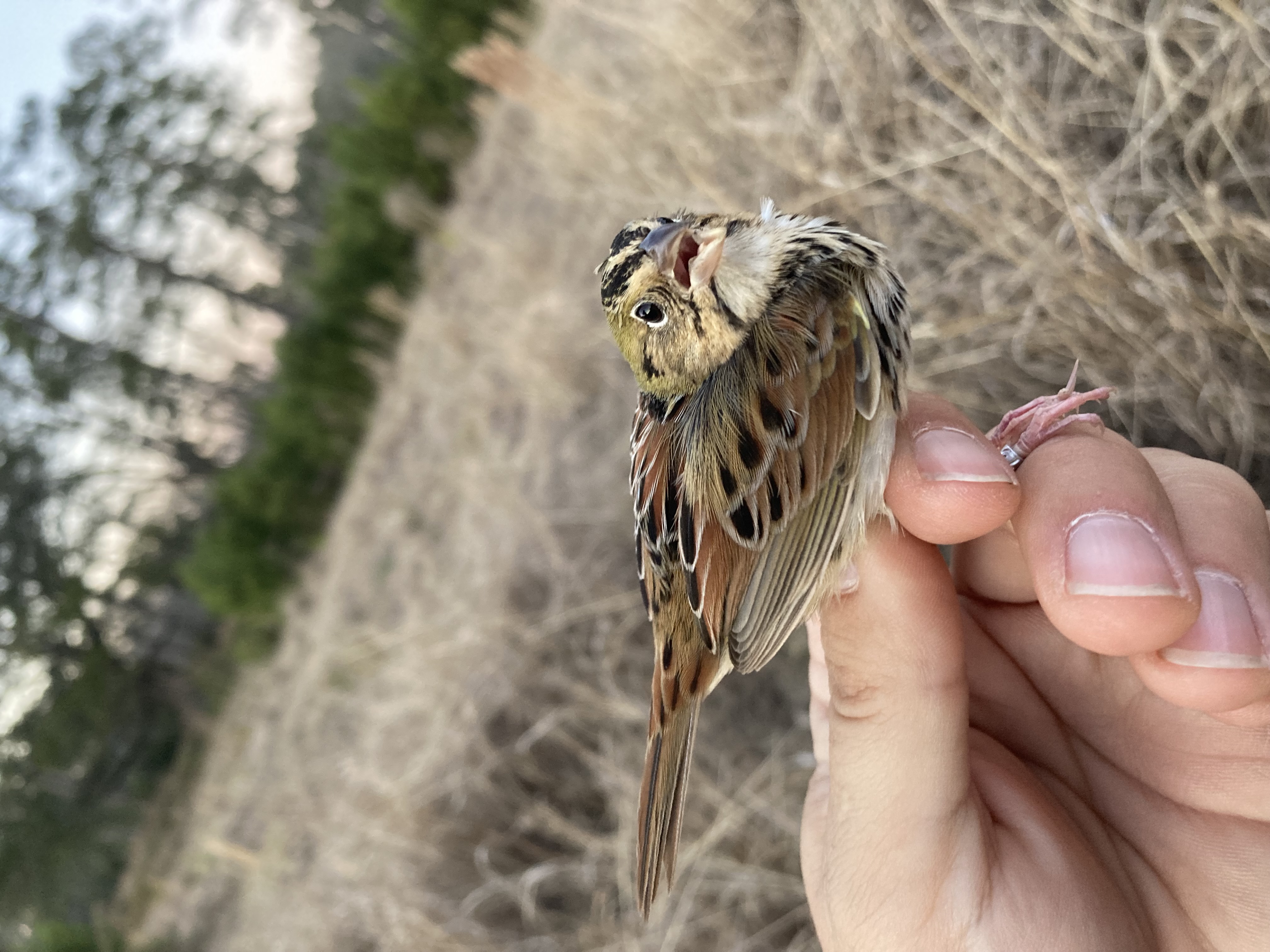As Braden’s sensational Sierran summer begins to wind down, he has continued to have remarkable experiences, both avian and mammalian. In Episode 7, he recounts his hardest hike ever in an attempt to locate some of Yosemite’s most interesting and elusive mammals.
Despite being the nearest gas station, restaurant and convenience store to the eastern entrance of Yosemite National Park, the Mobil station was fairly empty when our red Nissan pulled into the parking lot at seven in the morning. We gathered around a table, breakfast burritos in hand, as we waited for the Bighorn Sheep biologists to arrive from their various lodgings. As we would learn later, sheep biologists sleep in because the sheep sleep in, which differs quite a bit from us bird biologists. At 7:30, we noticed a crowd gathering outside, and donned our identical Institute for Bird Populations baseball caps, heading out to meet them.
Among the scientists we met outside were Dr. Lacey Greene and Dr. John Wehausen, the latter of whom had worked with sheep his entire life and had apparently drafted most of the recovery plan for the Sierra Nevada Bighorn Sheep. As Wehausen joined the group, he struck up a conversation with Greene.
“537 had a lamb yesterday when we went out. 522, didn’t though. I’ve only seen a few lambs so far this year.”
Apparently, every single Bighorn Sheep in Yosemite National Park has a number assigned to it, and as I would learn, a radio collar frequency. The reason these surveys were being conducted in the first place was because the Sierra Nevada subspecies of Bighorn Sheep was not doing well. Due to threats that included diseases spread by domestic sheep, the entire population of Bighorn Sheep in the Sierra had declined to around 100 individuals in the 1990s, spurring the federal government to list them under the Endangered Species Act. Thanks in part to Wehausen’s recovery plan, as well as the hard work of dozens of other sheep scientists, the herd had now increased to roughly 600 sheep, both inside and outside of the park.
Dr. Greene introduced all of the biologists that would be hiking various parts of eastern Yosemite to look for sheep, and we approached her, asking which biologist we should go with for a medium-level route since we had work tomorrow and did not want to exert ourselves too much. We also requested a route that maximized our chances of seeing White-tailed Ptarmigan, a bird Sam needed for his life list. Interestingly, ptarmigan are not native to the Sierras and were introduced to the area in the 1970s, although we still hoped to run into some in the alpine zone we would be hiking. Dr. Greene pointed towards Seth, a graduate student from the University of Wyoming studying the carrying capacity of the Sierras for sheep, who would be doing a route called “Mt. Gibbs”.
“Should be a medium route with good chances of ptarmigan,” Dr. Greene said, and we took her word for it. Perhaps we shouldn’t have.
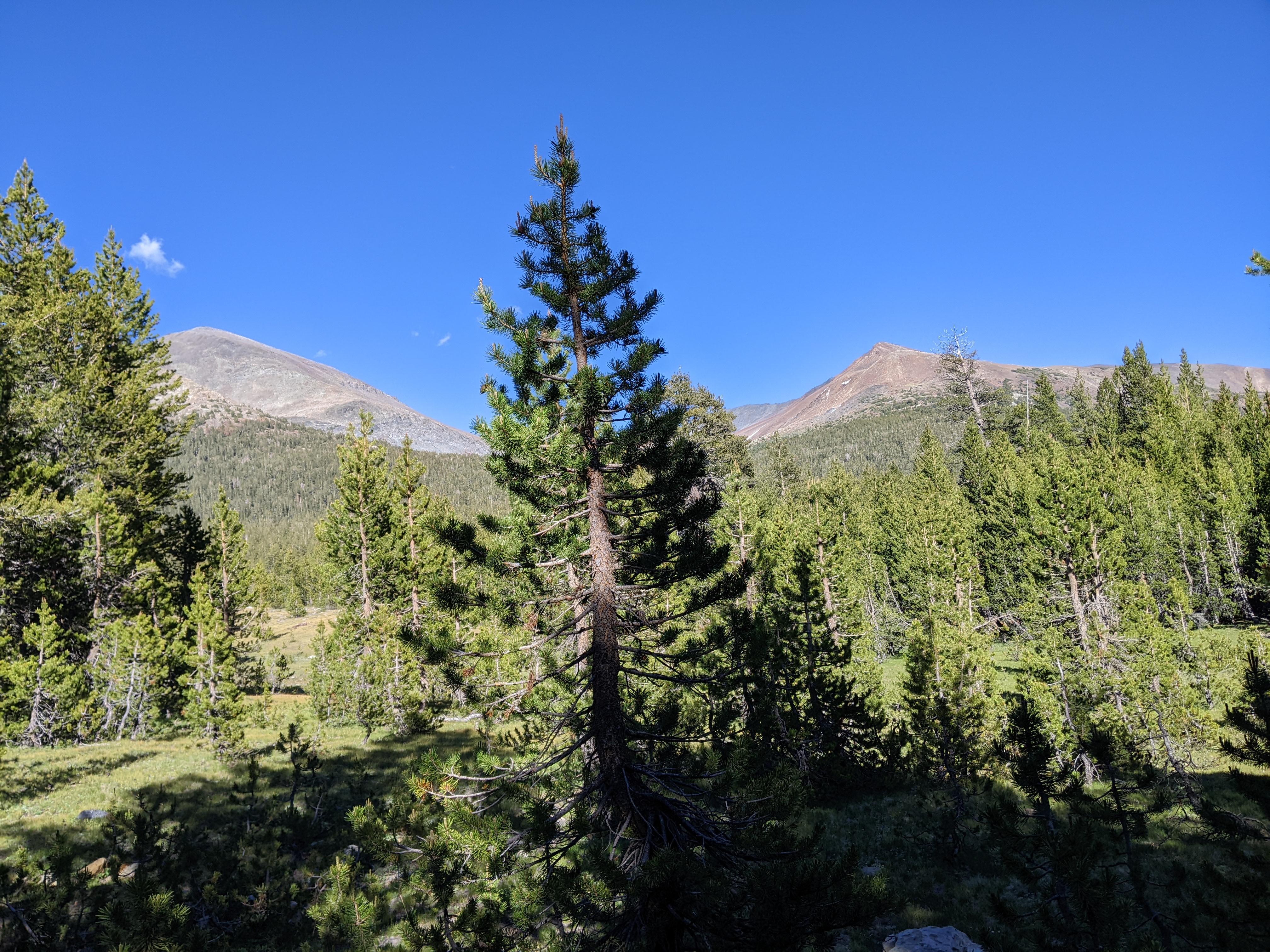
After introducing ourselves to Seth, we all piled into the Nissan (which has adopted the name “the company car”) and joined the caravan of biologists and volunteers headed towards Tioga Pass. I quickly learned from Miles that we likely wouldn’t see many of the National Park’s main attractions, including Yosemite Valley and Half Dome, but soon realized that this did not mean we would be short on scenery. The road soon led us out of the sagebrush and juniper dominating the hills of the eastern Sierra and into subalpine forest. Carved peaks and ridges topped with snow rose around us, and in the distance I marveled at views rivaling Glacier National Park. After entering the park, we soon arrived at the Mono Pass Trailhead and set off through Lodgepole Pine forest with two dozen bighorn sheep biologists.
Several months ago, I’d had no idea what part of California held Yosemite, and now here I was, crossing another one of the United States’ most beautiful places off of my bucket list. The trail crossed wet meadows and creeks, filled with the songs of Lincoln’s and White-crowned Sparrows, and as we gained elevation, Miles pointed out the peaks around us.
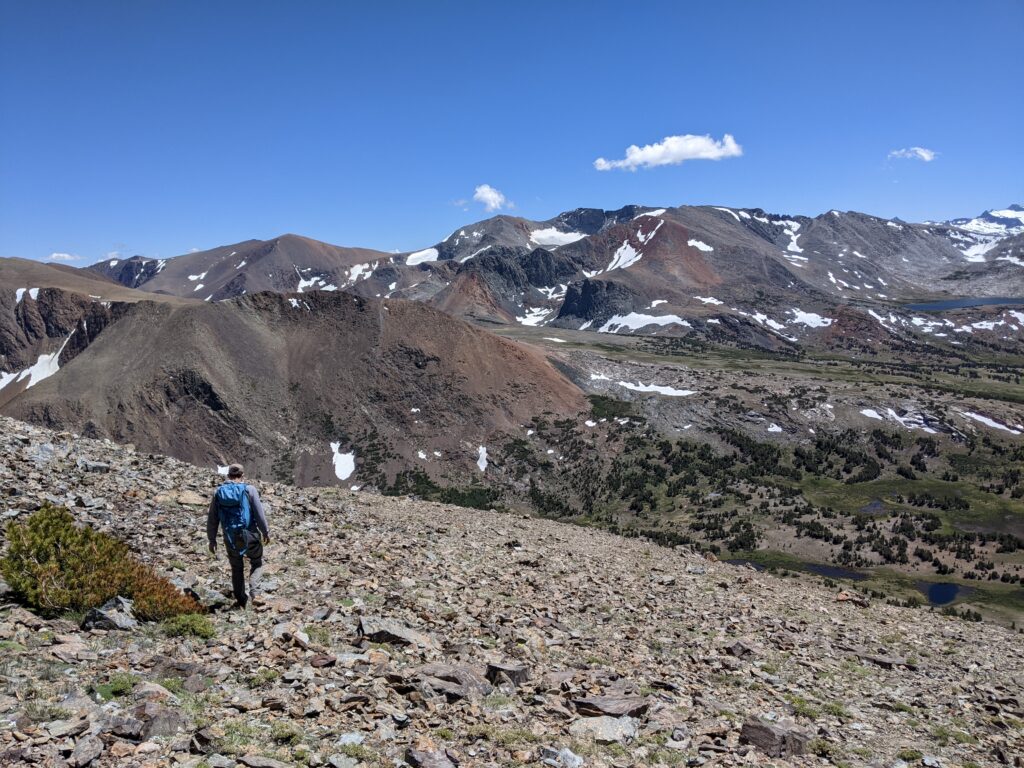
“To our left is Mt. Dana, the second-tallest peak in the park at 13,000 feet,” he said excitedly, “And at some point we should be able to see the tallest, Mt. Lyell, to the right along with the Lyell Glacier below it.”
I’d had no idea that any glaciers existed in California, and later learned that the Lyell Glacier was one of only two left in the park. And despite the wilderness-feeling that Yosemite produced as we hiked through it, glaciers weren’t the only thing missing from this once-intact ecosystem. Every time my dad and I visited Glacier, we would try to see the Big Four, what we considered to be the largest (and most obvious) wildlife in the park. Bighorn Sheep were the only one of those species that existed here. Moose and Mountain Goats had never lived in the Sierras, and Grizzly Bears had been extirpated a century ago. So while Yosemite may have rivaled Glacier in terms of scenic vistas, it did not deliver in terms of wildlife.
After about a mile, the rest of the group bid us farewell as Seth led us off the trail…directly uphill. We hiked straight up a ridge, through the Lodgepole, for about five minutes before realizing that a sheep biologist’s definition of a “medium hike” differed quite a bit from our own. In fact, it was the hardest hiking I’ve ever done. Following Seth, we left the treeline behind as we realized what we were up against: Mt. Gibbs was only three hundred feet shorter than neighboring Mt. Dana, at 12,700 feet. That was something Yosemite could hold over Glacier—the mountains were taller. Granite Peak, Montana’s tallest, rose only to 12,800 feet. Thankfully, Seth allowed us to take as many breaks as we needed as we scrambled over boulders and scree, heading straight for the summit.

We did not see any ptarmigan. Nor did we spot any of the alpine raptors, like Prairie Falcon or Golden Eagle, that I’d hoped to glimpse. That isn’t to say that the alpine zone of Mt. Gibbs was devoid of life. Tufts of small grass, brilliant purple and white flowers, and splashes of lime green and blood orange lichen led us all the way to the summit. Insects, too, seemed to live here in abundance, and I spotted species of grasshoppers, spiders, ants and butterflies I’d never seen before. One bird seemed to thrive up here: Gray-crowned Rosy-finches, one of the most extreme bird species on the planet. Rosy-finches flitted past us over the scree, and one particularly cooperative flock picked seeds off of a lingering snowpack near the top of the mountain. These birds breed only in these alpine areas, beyond the reach of almost any other bird species and the trees themselves.
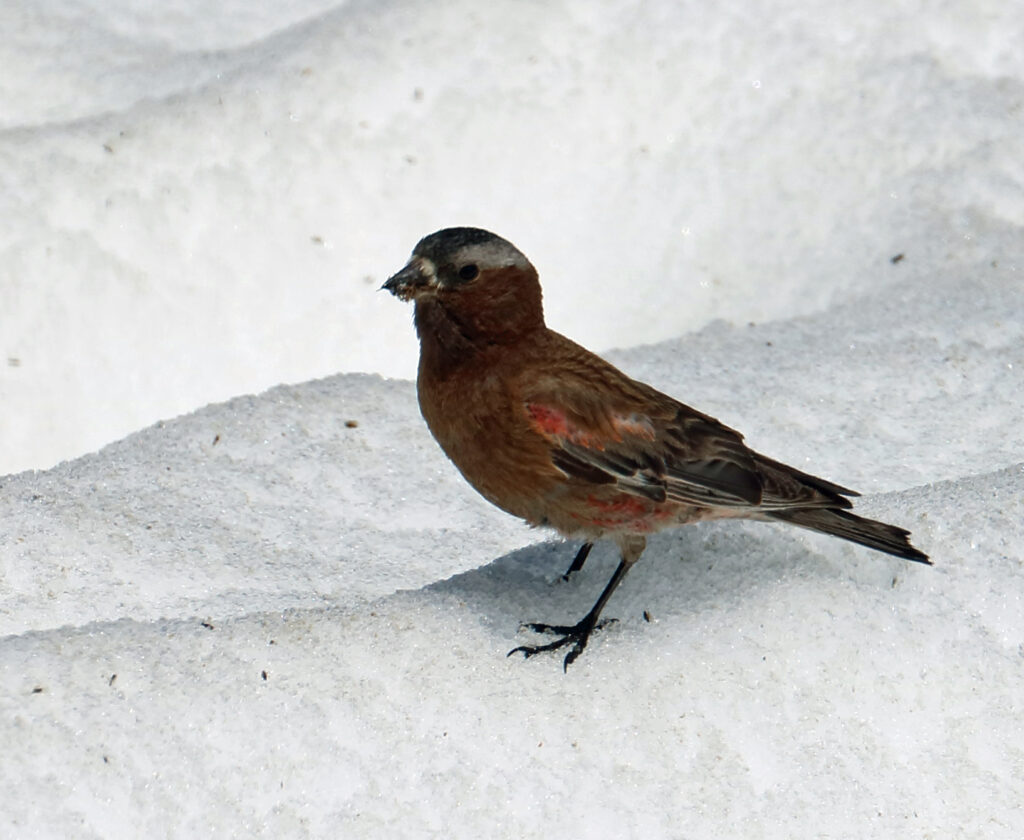
On our ascent, we stopped about every five hundred meters so that Seth could remove a strange device from his backpack. On one end was a sort of radio which displayed primitive numbers and figures, and on the other was an H-shaped receiver. This revealed how the biologists expected to locate the sheep on these seemingly-endless ridges: radio telemetry. The third time we stopped, Seth let me try out the system, and explained to me how it worked. Apparently, every single collared sheep in the Sierras has their own frequency, like the frequency of a radio station. Thus, if you want to locate an individual, you punch its frequency into the radio. Turning a knob increases the volume, and then the H-shaped part of the device comes into play. I held the “H” above me, facing the sky, and slowly rotated it, searching for a signal. Once I began to hear a faint beep, I turned the “H” towards it, trying to locate exactly which direction that beep was coming from. The louder the beep, the more accurate the direction. And in this case, the beep corresponded to a single ram hiding just beyond a ridge in front of us.
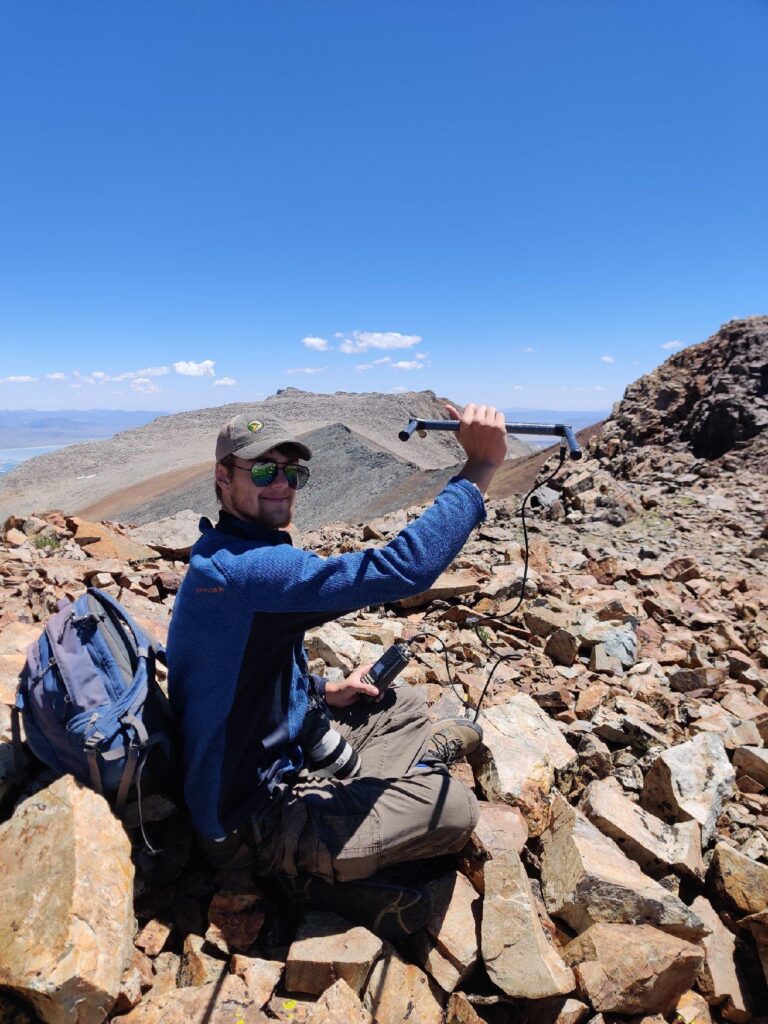
Eventually we struggled to the top of Mt. Gibbs, having climbed more than three thousand vertical feet in less than two hours, with no trace of a trail to follow. At the top, we huddled in a small rock shelter someone had constructed, and I signed my name in the “Mountain Registry”, a small notebook housed in a worn, metal box. While I’d like to say that we spent the next hour scanning for sheep, the four of us IBP employees just lounged on the rocks, recovering while Seth did most of the work. Apparently, this was an “easy” day for him—sheep biologists spend most of the summer on five- to ten-day backpacking trips trying to find herds. After recovering a bit and having some snacks, I spent a good amount of time photographing the rosy-finches feeding on the snow around us.
Then it was time to descend. This proved just as difficult as the ascent, as we slowly slid down a scree field for almost an hour before hitting the first trees again. Although we still hadn’t spotted any sheep, we opted to return to the cars. We had work tomorrow and still needed to drive the two and a half hours back to Mi-wuk Village. eBird claimed we had logged nine and a half miles, which meant we had probably hiked closer to twelve, much of that up and down incredibly steep terrain. The survey as a whole, however, was quite productive. The other biologists found at least 32 sheep, including plenty of rams.
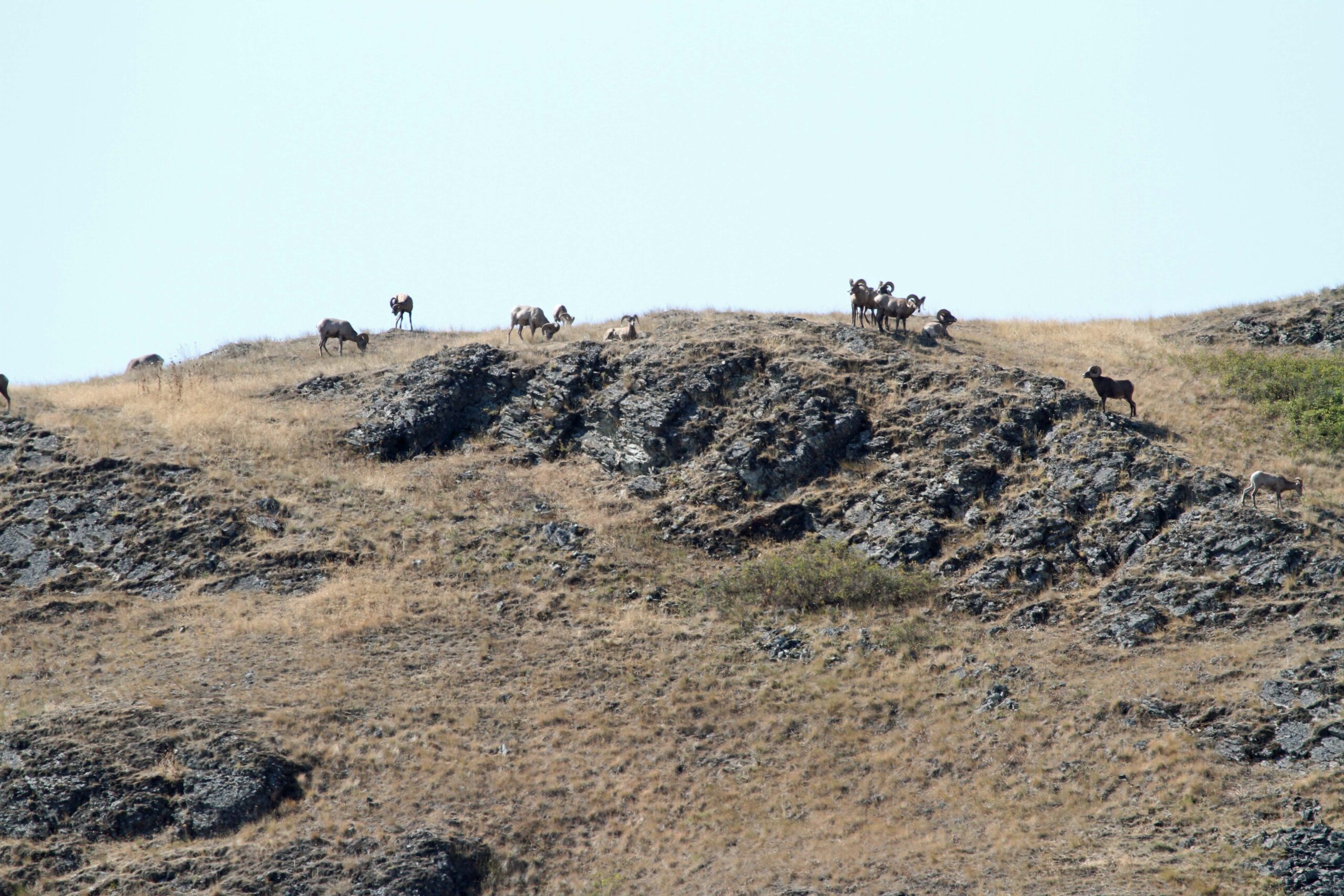
Once we got back to the parking lot, legs aching, we thanked Seth for everything and hopped back in the company car. I said goodbye to Yosemite, unsure of when I would return, and after a quick stop at the Mobil station for tacos, we headed home.

